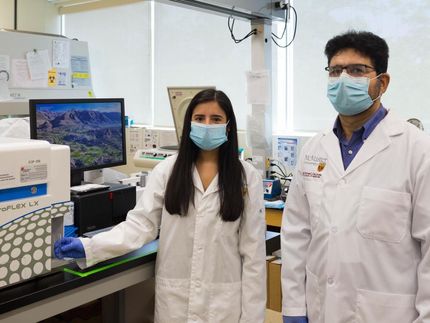Watching a tumour grow in real-time
Researchers from the University of Freiburg have gained new insight into the phases of breast cancer growth
The ability to visualize and characterize the composition of a tumour in detail during its development can provide valuable insights in order to target appropriate therapeutics. Researchers from the University of Freiburg have visualized and quantified the growth and composition of breast tumours over time in a living animal.

E2-Crimson expressing tumour cells (gray/white structures) in the organs of a rat after six weeks of tumour development.
Working Group Shastri
Diagnosing and treating tumours remains one of the grand challenges of medicine in the 21st century. One way to visualize internal structures in living systems is to use light to selectively illuminate certain tissue, and analyse the reflected light to determine the structure. In such light-based imaging techniques, fluorophores provide specificity and contrast, to distinguish one tissue from the other and to delineate specific tissue components.
The researchers from the University of Freiburg engineered breast cancer cells to express E2-Crimson – a protein that absorbs light in the far-red spectrum – and then grew these cells in a living system to form tumours. The scientists achieved the visualization of the tumour in real-time by illuminating the tumour expressing E2-Crimson with near infrared light followed by reconstruction of the tumour image using fluorescence molecular tomography.
During the first four weeks of tumour development, the tumour volume increased not due to the increase in the tumour cells but due to the support matrix they were synthesizing. After four weeks, however, the tumour underwent a dramatic increase in the number of tumour cells. These new findings and the ability to provide visual and quantitative information on phases of tumour growth is important for selection of treatments and delivery of cancer drugs in the future.
Original publication
Other news from the department science

Get the analytics and lab tech industry in your inbox
By submitting this form you agree that LUMITOS AG will send you the newsletter(s) selected above by email. Your data will not be passed on to third parties. Your data will be stored and processed in accordance with our data protection regulations. LUMITOS may contact you by email for the purpose of advertising or market and opinion surveys. You can revoke your consent at any time without giving reasons to LUMITOS AG, Ernst-Augustin-Str. 2, 12489 Berlin, Germany or by e-mail at revoke@lumitos.com with effect for the future. In addition, each email contains a link to unsubscribe from the corresponding newsletter.
























































